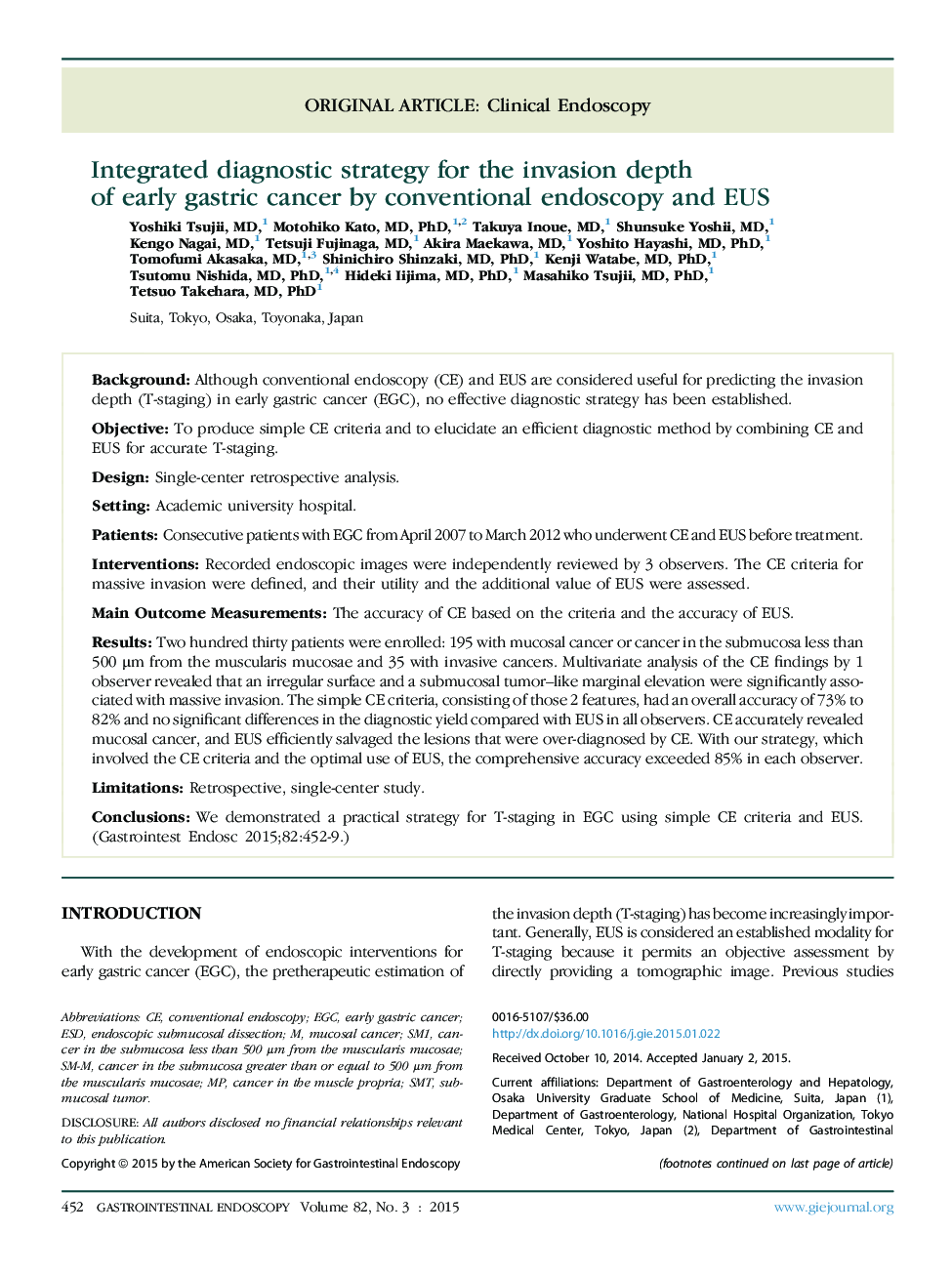| Article ID | Journal | Published Year | Pages | File Type |
|---|---|---|---|---|
| 3302204 | Gastrointestinal Endoscopy | 2015 | 8 Pages |
BackgroundAlthough conventional endoscopy (CE) and EUS are considered useful for predicting the invasion depth (T-staging) in early gastric cancer (EGC), no effective diagnostic strategy has been established.ObjectiveTo produce simple CE criteria and to elucidate an efficient diagnostic method by combining CE and EUS for accurate T-staging.DesignSingle-center retrospective analysis.SettingAcademic university hospital.PatientsConsecutive patients with EGC from April 2007 to March 2012 who underwent CE and EUS before treatment.InterventionsRecorded endoscopic images were independently reviewed by 3 observers. The CE criteria for massive invasion were defined, and their utility and the additional value of EUS were assessed.Main Outcome MeasurementsThe accuracy of CE based on the criteria and the accuracy of EUS.ResultsTwo hundred thirty patients were enrolled: 195 with mucosal cancer or cancer in the submucosa less than 500 μm from the muscularis mucosae and 35 with invasive cancers. Multivariate analysis of the CE findings by 1 observer revealed that an irregular surface and a submucosal tumor–like marginal elevation were significantly associated with massive invasion. The simple CE criteria, consisting of those 2 features, had an overall accuracy of 73% to 82% and no significant differences in the diagnostic yield compared with EUS in all observers. CE accurately revealed mucosal cancer, and EUS efficiently salvaged the lesions that were over-diagnosed by CE. With our strategy, which involved the CE criteria and the optimal use of EUS, the comprehensive accuracy exceeded 85% in each observer.LimitationsRetrospective, single-center study.ConclusionsWe demonstrated a practical strategy for T-staging in EGC using simple CE criteria and EUS.
